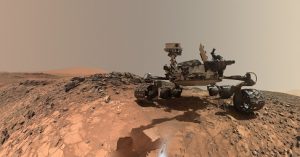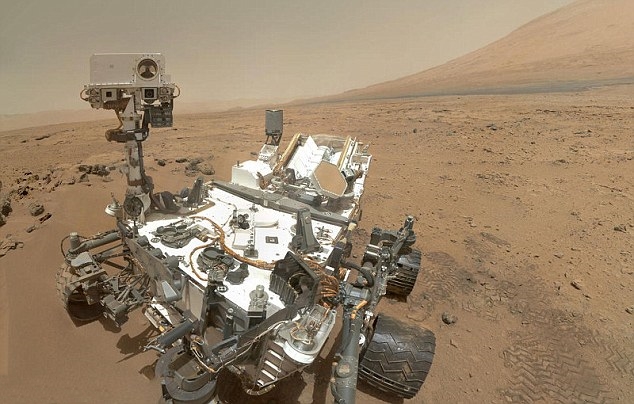
NASA’s Curiosity Rover Is Moving To New Location On Mars
NASA’s Mars Curiosity Rover had been doing great job from the time it was placed in space. NASA scientists had received few photographs from the Rover earlier. Now there has been some change going on in the rover’s destiny. NASA’s Mars Curiosity rover is driving towards the southwest after departing a region where for several weeks it investigated a geological contact zone and rocks that are unexpectedly high in silica and hydrogen.
After doing a long research on the rocks with high silica and hydrogen, the rover is being changing its target. In the “Marias Pass” region, Curiosity successfully used its drill to sample a rock target called “Buckskin” and then used the camera on its robotic arm for multiple images to be stitched into a self-portrait at the drilling site. The rover finished activities in Marias Pass on August 12 and headed onward up Mount Sharp.

Curiosity is carrying with it some of the sample powder drilled from Buckskin. The rover’s internal laboratories are analysing the material. The team members of mission’s science are seeking to find why this area bears rocks with higher levels of silica and hydrogen than other areas the rover has traversed. Silica was monitored with Curiosity’s laser-firing Chemistry and Camera instrument which rock is forming chemical with oxygen and silica.
Hydrogen in the ground beneath the rover is monitored by the rover’s Dynamic Albedo of Neutrons (DAN) instrument. It has been detected at low levels everywhere Curiosity has driven and is interpreted as the hydrogen in water molecules or hydroxyl ions bound within or absorbed onto minerals in the rocks and soil. Rover has progressed 433 feet (132 meters), bringing Curiosity’s total odometry since its August 2012 landing to 11.1 kilometres.
“The ground about 1 meter beneath the rover in this area holds three or four times as much water as the ground anywhere else Curiosity has driven during its three years on Mars,” said DAN Principal Investigator Igor Mitrofanov of Space Research Institute, Moscow. DAN first detected the unexpectedly high level of hydrogen using its passive mode. Later the rover went back using DAN in which the instrument shoots neutrons into the ground and detects the surface.

The measurements confirmed hydrated material covered by a thin layer of drier material. Curiosity initially noted the area with high silica and hydrogen on May 21 where two types of sedimentary bedrock lie in contact with each other. Such contact zones can hold clues about ancient changes in environment, from conditions that produced the older rock type to conditions that produced the younger one.
“We were pleased to see no repeat of the short circuit during the Buckskin drilling and sample transfer,” said Steven Lee, deputy project manager for Curiosity at NASA’s Jet Propulsion Laboratory, Pasadena, California. “It could come back, but we have made changes in fault protection to continue safely drilling even in the presence of small shorts. We also improved drill percuss circuit telemetry to gain more diagnostic information from any future occurrences.”